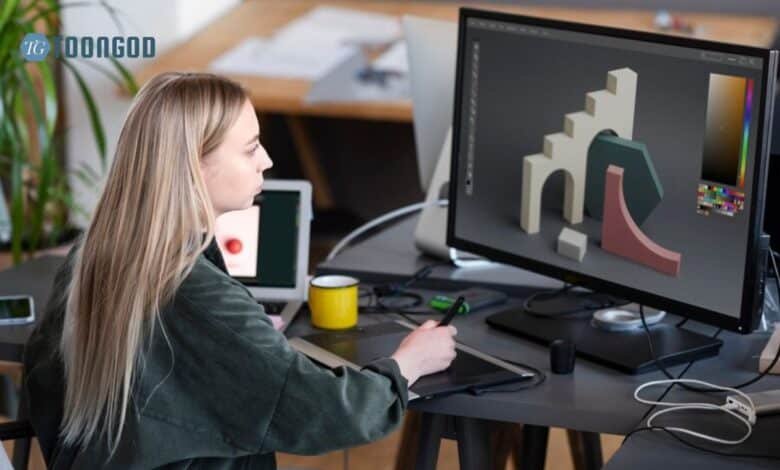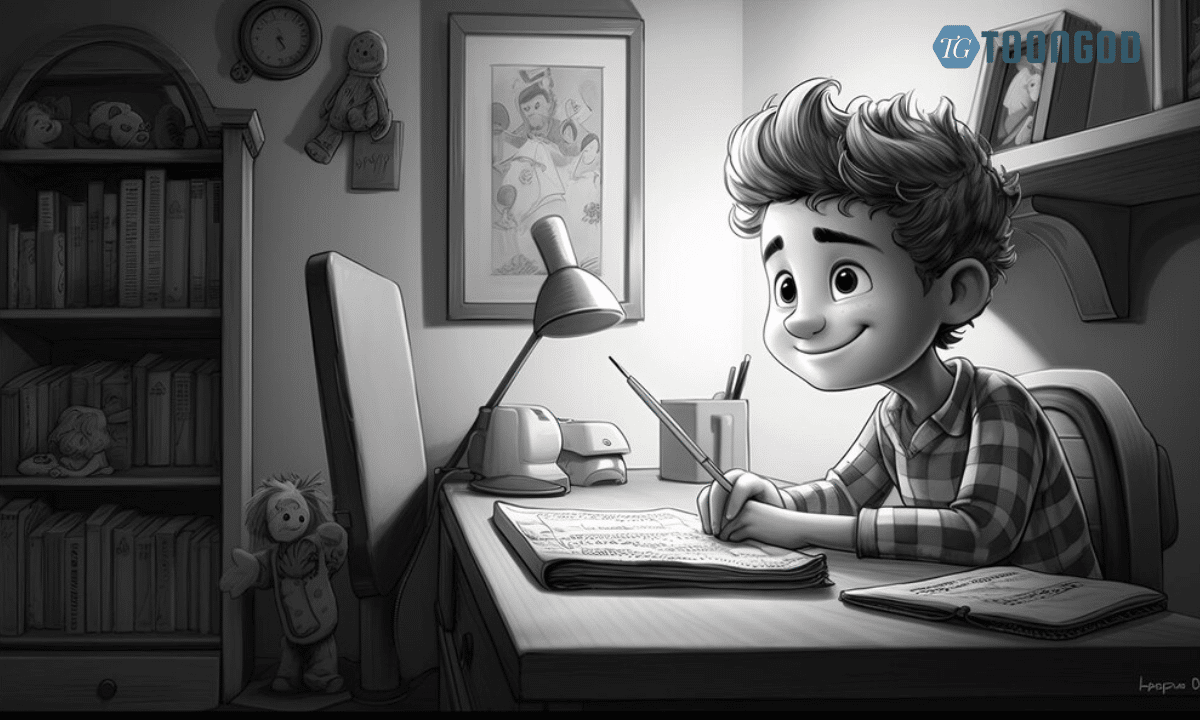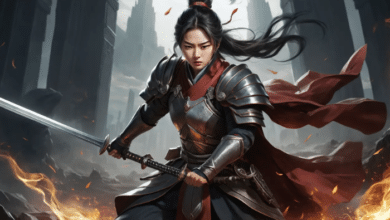Animation Drawing: Bringing Ideas to Life at Toongod 2024

Animation Drawing: In the ever-evolving landscape of visual storytelling, animation drawing stands as a cornerstone of creativity and expression. It combines art and technology to craft narratives that resonate with audiences worldwide. Whether you’re an aspiring animator in India or the United States, understanding animation drawing is essential for your journey in the animation industry, especially in 2024.
What is Animation Drawing?
Animation drawing refers to the process of creating sequential images that, when viewed in rapid succession, give the illusion of movement. Each frame in an animation tells a part of the story, and collectively they bring characters and scenes to life. This technique forms the foundation of all animation, from traditional hand-drawn styles to modern 3D animation.
The Importance of Animation Drawing in Storytelling
At its core, animation drawing is about storytelling. Every animation, whether a feature film, a television series, or an online video, begins with a story. The visual representation of that story is where animation drawing shines. Here are some key aspects of its importance:
- Character Development: The ability to convey emotions, personalities, and transformations through character animation is crucial. Animation drawing allows artists to create nuanced characters that resonate with audiences. From the way a character walks to the subtle changes in their facial expressions, every detail contributes to their identity.
- Visual Narratives: Animation drawing enables the creation of rich visual narratives that can convey complex ideas and emotions. Through the careful selection of poses and movements, animators can guide the audience’s understanding and emotional response to the story.
- Cultural Representation: Animation drawing offers a platform for cultural expression. Artists can incorporate elements of their heritage and identity into their work, creating animations that reflect diverse experiences and perspectives.
- Engagement and Entertainment: Animated content captivates viewers, making it an effective medium for entertainment and engagement. High-quality animation draws audiences into the world being created, encouraging them to invest emotionally in the story.
The Evolution of Animation Drawing
The journey of animation drawing has been remarkable, transitioning from traditional methods to the digital age. Let’s explore this evolution.
Traditional Animation
Traditional animation, often referred to as hand-drawn animation, involves creating individual frames by hand. This painstaking process has been the foundation of animated films since the early 20th century. Each frame is drawn and colored, and when strung together, they create the final animated product.
Historical Milestones:
- Early Animation: The origins of animation can be traced back to the late 19th century with inventions like the zoetrope and the flip book. These devices demonstrated the principles of motion by displaying a series of images in quick succession.
- Disney’s Golden Age: Walt Disney revolutionized animation with classics like “Snow White and the Seven Dwarfs,” which showcased the possibilities of storytelling through animation drawing.
The Rise of Digital Animation
The late 20th century marked a significant turning point in the animation industry with the advent of digital technology. Today, animation drawing has evolved dramatically due to innovations in software and hardware.
Key Developments:
- Digital Drawing Tools: Graphic tablets and styluses have replaced traditional paper and pencil. Artists can now create high-quality drawings digitally, allowing for greater flexibility and efficiency.
- Animation Software: Advanced software such as Adobe Animate, Toon Boom Harmony, and Blender provide animators with powerful tools for creating, editing, and animating drawings. These programs support features like layering, timeline management, and real-time playback, making the animation process smoother and more intuitive.
The Hybrid Approach
Many contemporary animators blend traditional and digital techniques, creating unique styles that capture the essence of both methods. This hybrid approach allows for greater creative freedom and innovation, as artists can experiment with various techniques to find their voice.
Why Learn Animation Drawing?
Career Opportunities in Animation
As the demand for animated content continues to rise globally, the career opportunities in animation are expanding rapidly. Both India and the United States are witnessing a surge in the animation industry, driven by various factors:
- Film and Television: Animated films and series are gaining immense popularity. Studios are looking for talented animators to contribute to projects that captivate audiences.
- Gaming Industry: The gaming sector is one of the fastest-growing industries in the world, with animation playing a crucial role in character design, environmental animation, and interactive storytelling.
- Advertising and Marketing: Brands are increasingly using animation to create engaging advertisements. Animation drawing allows marketers to communicate their messages effectively and creatively.
- E-Learning: The rise of online education has created a demand for animated educational content. Animators are needed to produce visually engaging materials that enhance learning experiences.
Personal Growth and Creativity
Learning animation drawing goes beyond career prospects; it fosters personal growth. Here’s how:

- Enhanced Creativity: Animation drawing encourages you to think creatively and explore new ideas. The freedom to express yourself through art can lead to innovative storytelling.
- Problem-Solving Skills: The animation process often involves overcoming challenges, whether it’s figuring out how to depict a complex movement or conveying emotions through subtle gestures. This enhances your critical thinking and problem-solving abilities.
- Collaboration: The animation industry thrives on collaboration. Working with others fosters teamwork and communication skills, essential traits in any creative field.
- Continuous Learning: The animation field is constantly evolving, requiring animators to stay updated with new techniques and tools. This continuous learning journey keeps your skills sharp and relevant.
Getting Started with Animation Drawing
Essential Tools for Aspiring Animators
To embark on your animation drawing journey, you’ll need some essential tools. Here’s a breakdown:
- Graphic Tablets: A high-quality graphic tablet is a must-have for any aspiring animator. Brands like Wacom and Huion offer tablets that provide pressure sensitivity and a natural drawing experience.
- Animation Software: Choose software that aligns with your skill level and needs. Beginners might start with free programs like Pencil2D or Krita, while more experienced animators can explore advanced software like Adobe Animate or Toon Boom Harmony.
- Styluses: Investing in a good stylus can greatly enhance your drawing experience. Look for styluses that offer precision and responsiveness.
- Reference Materials: Having a collection of reference materials, such as anatomy books, art guides, and tutorials, can significantly aid your learning process.
Fundamental Principles of Animation Drawing
Before diving into animation drawing, it’s essential to grasp some fundamental principles that guide the animation process. These principles were established by Disney animators and remain relevant today:
- Squash and Stretch: This principle gives objects a sense of weight and volume. By exaggerating movements, animators can convey emotions and physicality more effectively.
- Anticipation: Anticipation involves preparing the audience for an action. By including a subtle movement before a significant action, animators create a more believable and engaging experience.
- Timing and Spacing: Effective timing is crucial for creating realistic animations. Understanding how to manipulate timing and spacing can enhance the overall flow and believability of your animation.
- Exaggeration: Exaggerating actions and expressions adds charm and personality to characters. This technique helps convey emotions more effectively and makes the animation visually engaging.
- Follow-Through and Overlapping Action: Follow-through refers to the continuation of movement after an action is completed, while overlapping action involves different parts of a character moving at different rates. These principles create a more fluid and realistic animation.
- Staging: Staging refers to the presentation of an idea so that it is clear to the audience. This principle involves framing scenes in a way that highlights key actions and emotions.
Practice Regularly
The key to mastering animation drawing is consistent practice. Here are some effective strategies to improve your skills:
- Daily Sketching: Set aside time each day for sketching. Focus on different aspects of animation, such as character designs, poses, and expressions. This regular practice will sharpen your drawing skills.
- Analyze Animated Works: Study animated films, series, and videos to understand the techniques used by professionals. Pay attention to how movements are executed and how emotions are conveyed through animation drawing.
- Join Online Challenges: Participate in online animation challenges or contests. These events encourage you to create and share your work, providing valuable feedback from peers and professionals.
- Collaboration: Collaboration with fellow artists can offer fresh perspectives and techniques. Consider joining animation communities or forums where you can connect with others who share your passion.
- Keep a Sketchbook: Maintain a sketchbook to document your ideas, sketches, and experiments. This will serve as a valuable resource for tracking your progress and finding inspiration.
The Animation Industry in India and the United States
Animation in India
The animation industry in India has seen exponential growth in recent years. With a rich cultural heritage and a burgeoning entertainment sector, India has become a hub for animation production. Here are some key aspects of the Indian animation industry:
- Television and Film: Indian animated films, such as “Chhota Bheem” and “Motu Patlu,” have gained immense popularity among children and families. The demand for animated television shows is also on the rise, with platforms like Netflix investing in Indian animation.
- Gaming Industry: The gaming sector in India is rapidly expanding, creating a growing demand for animators skilled in character design and animation. As mobile gaming becomes increasingly popular, opportunities for animation professionals are on the rise.
- E-Learning: The pandemic has accelerated the adoption of online education in India. Animated educational content is in high demand, providing a platform for animators to contribute to the learning experience.
- Global Collaborations: Indian animation studios are collaborating with international companies, leading to cross-cultural projects that showcase Indian talent on a global stage.
Animation in the United States
The United States has long been a leader in the animation industry, producing iconic films and series that have shaped the landscape of animation. Here are some notable trends in the U.S. animation industry:
- Feature Films: Major studios like Disney, Pixar, and DreamWorks continue to produce blockbuster animated films that dominate the box office. These films not only entertain but also inspire aspiring animators worldwide.
- Streaming Platforms: The rise of streaming services like Netflix and Disney+ has created new opportunities for animated content. These platforms are investing heavily in original animated series, providing a broader audience for animators.
- Virtual Reality and Interactive Animation: The U.S. animation industry is at the forefront of exploring new technologies like virtual reality and interactive animation. These innovations are reshaping the way stories are told and experienced.
- Diversity and Inclusion: There is a growing focus on diversity and inclusion in the animation industry. Studios are seeking to represent different cultures and perspectives, leading to more authentic and relatable animated content.
The Future of Animation Drawing
As we move forward into 2024 and beyond, the future of animation drawing looks promising. Here are some trends that will shape the industry:
- AI and Automation: Artificial intelligence is beginning to play a role in animation production. AI can assist in tasks like in-betweening, allowing animators to focus on more creative aspects of their work.
- Augmented Reality: Augmented reality (AR) is becoming increasingly popular, providing new ways for animators to engage with audiences. AR experiences can enhance storytelling by integrating animated elements into the real world.
- Sustainability: The animation industry is becoming more aware of its environmental impact. Studios are exploring sustainable practices and technologies to reduce their carbon footprint during production.
- Global Collaboration: As the animation industry becomes more interconnected, opportunities for cross-border collaborations will continue to grow. This will lead to the exchange of ideas and styles, enriching the animation landscape.
Conclusion
Animation drawing is more than just a skill; it is a gateway to creativity and storytelling. Whether you’re in India or the United States, the world of animation offers endless possibilities for those willing to learn and innovate. By mastering the fundamentals, practicing regularly, and staying informed about industry trends, you can carve out a successful career in animation.
To enhance your animation skills further, consider exploring tools like the Adobe Free Animation Maker, which empowers you to create stunning animations with your creativity in 2024.
At Toongod, we are committed to supporting aspiring animators on their journey. Explore our About Us page to learn more about our mission and the resources we offer. If you have any questions or need guidance, feel free to reach out through our Contact Us page. Together, let’s bring your animation dreams to life!





